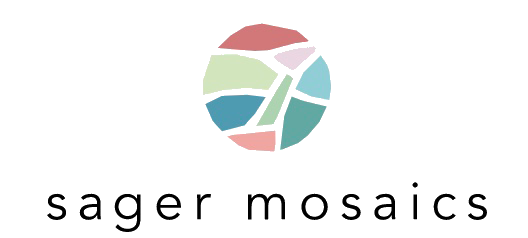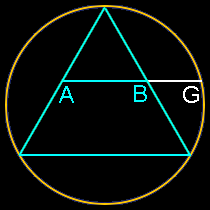On the nature of shape
I got a D in geometry when I was in the 11th grade. Being a moderately bright, well-meaning student, this black spot carried some serious shock value for both me and my parents. I wasn’t in the valedictorian pool of competitive study but I generally always tried to check all the right boxes. With a little focus and work, I could maintain a 3.5 grade average. Something was quite obviously wrong. It was like there were bridges that only spanned halfway across rivers, leaving me stranded and confused. Geometry is literally a 3-dimensional field of study and I was struggling to understand it from a very 2-dimensional perspective. It never improved for me and I must say, once I lost my confidence in math, it was all downhill from there. To this day, my brain seizes up when faced with even simple math problems; a classic Achilles heel. I realize that my phobia-like reaction is a common problem, especially for the newer generations going through schooling now. Maybe it’s a common core failure, but that’s not my focus here.
I want to talk about the fullness of shape. Like the fullness of time, it will become clear when it’s good and ready and not a moment earlier. Shape can mean a condition: “I’m so out of shape.” Shape can be a verb: “You must shape the dough into round balls.” For the thinking mosaicist, shape will take on many meanings along the way. If you cut your tesserae with a hammer, and I will never apologize for saying that you should, shaping becomes a meaning-filled first act in the mosaic-making play.
The sacred act of cutting raw material down into pieces of things is inextricably linked to shape and how that shape will help your lines to communicate. Today I choose to cut piles and piles of cube-like shapes for a particular, classical andamento. Tomorrow I will be cutting narrow, irregular slivers for some modern exuberant expression. Later in the week, I have planned to cut almost perfect circles to build an Indiana Jones style line on a map. Every shape can do a job for you. Sometimes mixing all the shapes together and building lines out of all of them can be a particular challenge if you want to stretch yourself or push a boundary.
“Allegory of Free Will” (2011) Private Collection of Ashley Judd
Lately, I have become more comfortable labeling myself a line-builder than a mosaicist. It’s a dorky distinction; kind of like how a Star Wars fan will separate their love of the original stories from the 90s prequels. I’m a die-hard Boba Fett fan, but I simply cannot abide Jar Jar Binks. In both cases, these idiosyncrasies are lost on the general public. This conversation is for the line-building techies out there.
Over the years, I have narrowed down the shapes that help my lines and the shapes that hurt my lines. The cube-like shape is, of course, the comfortable, go-to contour for line-building. A large collection of these cut into beautifully irregular squares will create that essential anonymity of tesserae that has become the hallmark of the classical mosaic style. When you are learning to cut with the hammer, this is the shape you practice cutting…over and over and over in meditative bliss. The keystone is a beautiful version of the cube-like shape and is an old stand-by for turning corners with elegance. The vertical rectangle is another helpful shape. This is in contrast to the horizontally placed rectangle, which, if placed end to end too many times, creates the dreaded box car train effect. The vertical rectangle gives you a flexibility in that it can be easier to turn corners and create a contemporary movement. I get a kick out of acknowledging that these two shapes are identical; it’s simply by adjusting their position that makes one work and the other not. The sliver is similar to the rectangle, just more narrow and irregular. This is one of my favorite ways to insert personality into the line. The sliver is unexpected. It can be subtle or dramatic, depending on how you place it. It’s flexible in that you can situate it in almost any direction and make it work.
I find the parallelogram to be the most unhelpful of the shapes. The two sides that sit parallel to each other, always, without fail, will send your line into awkward territory. I have become vigilant at keeping this shape out of my tesserae stockpiles, because even slight introductions of them will catch my eye later. If you have spent time in one of my classrooms, you know that I can spot a parallelogram from across the room.
“Coastline” (2016)
The last two shapes I will mention are the wild cards. They aren’t traditional mosaic shapes and are often used as highlights or focal points. The circle and the triangle attract attention. In a field of cube-like shapes they draw the eye. I have been experimenting lately with embedding the circle into a line of squares and enjoying the effect its roundness has in the interstices of the straight edges. There is a fullness to the circular shape that I find comforting. Or maybe I just like nipping material into an almost, but not quite, perfect circle. That not quite perfect distinction works as a common ground for all of the shapes. A perfect shape loses its personality. Or maybe I should say its imperfection represents a distinctly human element. And that repetitive humanness in any mosaic is the hook that draws us in and makes us want more.
“Light Out For The Territory” (2012)
And now to the dreaded triangle. I was taught early on to reject this shape. Its three sharp sides have a way of standing out like sore thumbs, especially when used as default choices: “That’s what fits in the space I have left!” I will happily argue with you as to why this is never a good reason to use a triangle. But rules are meant to be broken. I keep a hawk’s eye out for artists who break the rules of andamento in ways that surprise and delight me.
Finally, back to the geometry…I had the good fortune to be invited to act as the visiting/teaching artist for a pilot program called Craft Integration at a local, rural high school a few years ago. The theory was that by introducing authentic hands-on craft to non-art classrooms, the students could learn about their given subject in a deeper, more authentic way. I worked with environmental science, history, language, and literature and found ways to weave mosaic philosophy into all of them. Mosaic can do everything, right?
2 + 2 = andamento
But it is, of course, the geometry class that I want to mention here. I realized the connections I could make between the shapes of tesserae and the equations on their papers and computer screens. We could hold the tesserae in our hands and talk about the six sides, feeling the roughness or smoothness of stone and glass. We talked about how, in a mosaic, we think we see just one side, the top side. But in reality, all six sides do their parts to make the whole work. The four sides interact with the four sides of the pieces next to them, above them and below them. Some sides create shadow and dimension. The underside is important too in how it’s angled into the mortar and of course how well it sticks determines the lasting quality of the mosaic itself. This simple introduction of physical, tactile tesserae in their own hands helped geometry students to see shape in a unique way. After having this wonderful experience, I certainly looked back at my own, stressful introduction to that odious math field and wished I could have had a mosaicist teaching me geometry!
This post originally appeared in the Winter 2016 edition of the Society of American Mosaic Artists’ publication, “Groutline”.
Sign up for the newsletter
You will receive one or two high quality blogs a month about anything from the state of contemporary mosaic, the power of dreams, the art of foraging to the latest updates on The Ruins.









